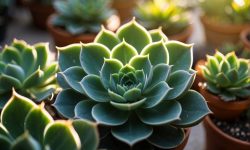Marigolds are one of the most rewarding flowers for any gardener, whether you have a large backyard or just a few pots on a sunny balcony. Their bright blooms add instant cheer to any garden, and their easy-growing nature makes them a favorite among beginners. However, successful germination is where everything begins. If the seeds fail to sprout or grow weakly, even the most beautiful marigold varieties won’t thrive. Learning how to germinate marigold seeds the right way gives you the power to grow healthier, stronger, and longer-blooming plants from scratch.
This guide will walk you through every detail you need to know to achieve fast and healthy marigold seed germination. From choosing the right seeds to preparing soil, maintaining ideal moisture, and caring for your seedlings, you’ll discover proven methods used by experienced gardeners. Each step is simple, practical, and easy to follow at home. By the end, you’ll be able to grow marigolds confidently and enjoy their golden blossoms season after season.
When to Start Marigold Seeds

Timing is one of the most important factors when germinating marigold seeds. Marigolds thrive in warm weather, so you must start them when temperatures begin to rise. In most regions, this means planting seeds indoors six to eight weeks before the last expected frost. This early start allows seedlings to grow strong before moving outdoors. If you live in a warmer climate, you can sow directly in the garden after the danger of frost has passed. The key is to give the seeds consistent warmth to trigger germination and prevent stress from sudden temperature changes.
Indoor sowing gives you more control over the growing conditions. You can maintain even moisture, steady light, and proper warmth between 70°F and 75°F (21°C–24°C). These are the ideal conditions for marigold seeds to sprout within five to ten days. Using a seed tray and lightweight potting mix ensures better air circulation and prevents fungal issues. Indoor germination also allows you to stagger planting times, giving continuous blooms through summer and early fall. Gardeners in colder states like Michigan or New York often prefer this method because it helps them extend the flowering season.
If you prefer direct outdoor sowing, wait until the soil warms to at least 65°F (18°C). Cold or wet soil delays sprouting and weakens seedlings. Choose a sunny location where the plants will get six or more hours of sunlight each day. In cooler zones, using a cold frame or garden cloche can help protect the seeds from unexpected frost. You can also use soil thermometers to ensure consistent warmth. Once you get the timing right, marigolds will germinate quickly and reward you with vibrant blooms that last for months.
Choosing the Right Marigold Seeds
Selecting the right marigold seeds is the first step toward successful germination and healthy blooms. There are several types of marigolds to choose from, each suited to different garden styles and climates. The most common varieties include African marigolds, French marigolds, and Signet marigolds. African marigolds produce large, globe-shaped flowers that stand tall and love full sun. French marigolds are smaller, bushier, and perfect for borders or pots. Signet marigolds, on the other hand, have delicate, edible blooms that release a light citrus scent. Knowing the differences helps you match the right seed type with your garden goals and growing conditions.
It’s also important to check whether you’re buying hybrid or heirloom seeds. Hybrid seeds are bred for traits like color uniformity and disease resistance but may not produce identical plants if you collect seeds for the next season. Heirloom seeds, in contrast, are open-pollinated and will grow true to type, allowing you to save seeds year after year. For beginners, either option can work well, but hybrids usually give more predictable germination rates and vibrant flower colors. Always purchase seeds from trusted suppliers to avoid low-quality batches that might have poor viability.
Before planting, take time to inspect the seed packet. Look for the packing date and germination rate percentage. Fresh seeds germinate faster and more evenly than old ones. You can also store extra seeds in a cool, dry place for up to two years if sealed properly. Choose varieties based on your sunlight conditions, soil quality, and desired bloom size. Selecting the right marigold seeds at the start ensures you grow plants that match your garden’s look, from neat edges to large, showy flower beds bursting with color.
Preparing the Soil for Germination
Good soil preparation is the foundation for successful marigold seed germination. Marigolds are not demanding plants, but they thrive best in loose, well-draining soil with moderate fertility. The soil should feel crumbly in your hands and never sticky or compacted. A mix of garden soil, compost, and perlite or sand works perfectly for indoor trays or outdoor beds. Compost adds organic matter that helps seeds sprout faster and seedlings grow stronger. If you’re using store-bought potting mix, choose one labeled “seed starting” because it’s sterilized and prevents fungal diseases that can harm young roots.
Before sowing the seeds, test your soil’s moisture and pH. Marigolds prefer slightly acidic to neutral soil with a pH between 6.0 and 7.0. Too much acidity or alkalinity reduces nutrient availability and slows seed growth. If your soil is heavy clay, lighten it with coarse sand or perlite. For sandy soils, add compost or peat moss to help retain moisture. Indoors, fill trays or pots about three-quarters full and gently press the mix to remove air pockets. Outdoors, rake the soil surface smooth and level before planting to ensure even seed distribution and better germination rates.
Moisture is key but must be managed carefully. The soil should be damp like a wrung-out sponge—neither soaked nor dry. Overly wet soil can suffocate the seeds and invite mold, while dryness stops germination altogether. Water the soil gently before sowing, so the seeds rest in a moist, stable environment. You can cover trays with plastic wrap or a humidity dome to retain warmth and humidity until the seeds sprout. Proper soil preparation ensures your marigold seeds have the perfect foundation to germinate quickly and grow into vibrant, healthy seedlings.
How to Plant Marigold Seeds Step by Step
Planting marigold seeds is a simple but delicate process that sets the tone for your plant’s entire growth cycle. Once the soil is ready, it’s time to start sowing with precision. Begin by moistening the soil evenly, ensuring it feels damp but not soggy. Make shallow furrows about a quarter-inch deep using your finger or a small stick. Sprinkle the seeds thinly along the row or surface, leaving some space between them to prevent overcrowding. Marigold seeds are small and light, so handle them gently to avoid burying them too deeply. A thin layer of fine soil or vermiculite over the top is enough to cover them and maintain moisture.
Next, create a stable environment that promotes germination. Marigold seeds need warmth, light, and steady humidity to sprout successfully. Place indoor trays in a bright spot where they receive at least six hours of indirect sunlight daily or use grow lights if natural light is limited. Maintain a steady temperature between 70°F and 75°F (21°C–24°C). Avoid direct, intense sunlight that may dry out the soil surface too quickly. If you’re growing outdoors, keep the soil consistently moist and protect the seeds from heavy rain or cold winds during the first few days. Covering the area lightly with clear plastic can help retain warmth and humidity.
Within five to ten days, tiny green shoots will start emerging from the soil. Once you see these sprouts, remove any coverings to allow better air circulation and prevent fungal issues. Keep watering gently so you don’t dislodge the delicate roots. If multiple seedlings grow too close together, thin them out to prevent competition for nutrients. With patience and consistent care, your marigold seeds will develop strong roots and sturdy stems, setting the stage for a season full of vibrant blooms.
Providing the Right Light and Temperature for Germination
Light and temperature are two essential elements that determine how fast and successfully marigold seeds germinate. While marigold seeds can sprout in partial shade, they perform best with consistent light and warmth. For indoor germination, place seed trays near a sunny window that receives bright, indirect light for most of the day. If natural light is insufficient, use full-spectrum grow lights positioned about six inches above the trays. Keep the lights on for fourteen to sixteen hours daily to mimic outdoor sunlight conditions. Adequate light prevents seedlings from becoming leggy or pale, ensuring they grow upright and sturdy.
Temperature stability is equally important. Marigold seeds germinate best in warm environments between 70°F and 75°F (21°C–24°C). If your indoor space tends to be cooler, consider using a heat mat beneath the seed tray to maintain a constant soil temperature. Avoid placing trays near drafts or windows where temperatures fluctuate, as this can delay germination or cause uneven sprouting. Outdoors, wait until nighttime temperatures stay above 60°F (15°C) before sowing directly into the soil. Sudden chills or frost can kill fragile sprouts before they establish roots. Consistent warmth encourages rapid cell growth, helping seedlings emerge strong and healthy.
Once the seedlings have sprouted, continue providing warmth but reduce the heat slightly to around 65°F (18°C) during the day. This gradual adjustment helps them adapt to normal growing conditions without shock. Ensure good airflow around the seedlings to prevent fungal diseases like damping-off, which thrive in stagnant, humid air. Balanced light, proper temperature, and good ventilation together create the ideal microclimate for healthy marigold germination. These early steps build resilience in your young plants, ensuring they grow into vibrant, long-lasting flowers that brighten your garden throughout the season.
Watering and Humidity During Germination
Watering correctly is one of the most important steps in germinating marigold seeds. Seeds need consistent moisture to trigger sprouting, but too much water can suffocate them or lead to fungal problems. The soil should always stay damp, never soggy. Before sowing, water the soil evenly and let excess moisture drain out. After planting, use a misting bottle instead of a watering can to avoid disturbing the seeds. Gentle, even misting keeps the top layer moist without washing seeds away. Marigold seeds are sensitive at this stage, so maintaining moisture balance is key to successful germination.
Humidity plays an equally important role during the early stages of growth. Covering seed trays with a plastic wrap or humidity dome helps trap moisture and warmth, creating a greenhouse-like environment. This method prevents the soil from drying out too quickly and keeps the air humid around the seeds. You can remove the cover once the first sprouts appear, as too much humidity later on may cause damping-off disease. In drier climates, placing a shallow tray of water nearby helps maintain local humidity levels without direct watering. Keeping the air slightly moist helps seeds stay hydrated and promotes strong root development.
As seedlings emerge, water them lightly once or twice a day depending on temperature and light conditions. The goal is to maintain steady soil moisture, not wetness. Always water from the bottom or at soil level to keep leaves dry and prevent disease. Good drainage is crucial—never allow water to pool at the bottom of trays or pots. Over time, as seedlings grow stronger, you can reduce watering frequency but increase volume slightly to encourage deep root formation. Balanced moisture and controlled humidity during germination create the perfect foundation for vibrant, resilient marigold seedlings.
How Long Does It Take for Marigold Seeds to Germinate
Marigold seeds are known for their quick and reliable germination when provided with the right conditions. Under ideal warmth and moisture, most seeds sprout within five to ten days. However, germination time can vary depending on factors like temperature, soil quality, and seed freshness. Fresh seeds generally sprout faster because their viability and energy reserves are higher. If the soil temperature stays between 70°F and 75°F (21°C–24°C), the first green shoots usually appear within a week. Cooler conditions can slow this process significantly, while inconsistent watering may cause uneven germination.
Patience is key during this phase. Even if you don’t see sprouts after a few days, it doesn’t necessarily mean the seeds have failed. Some may take a little longer, especially if started in lower temperatures or deeper soil. You can gently check one or two seeds after ten days by uncovering them to see if a small root tip has appeared. If not, increase warmth slightly and keep the soil evenly moist. Avoid overwatering, as waterlogged soil can prevent oxygen from reaching the seeds. Proper temperature and consistent moisture are the two main factors that control germination speed and success rate.
Once the seedlings emerge, the growth becomes visible almost daily. The first leaves, known as cotyledons, will be small and oval-shaped. Within a week, true marigold leaves with their signature serrated edges begin to appear. This stage signals that the germination process has been successful and that the plants are ready for more light and nutrients. Maintaining steady warmth and avoiding sudden temperature drops during this period helps young seedlings grow uniformly. With careful monitoring, your marigold seeds will soon transform into vigorous little plants ready for transplanting.
Caring for Marigold Seedlings After Germination
Hardening Off the Seedlings
Once your marigold seedlings have developed a few sets of true leaves, they’re ready for a process called hardening off. This step prepares the plants to transition from indoor conditions to the outdoor environment. Start by placing them outdoors for one to two hours a day in a shaded spot, then gradually increase their exposure to sunlight and outdoor temperatures over a week. This gradual adjustment helps the seedlings develop stronger stems and thicker leaves, reducing transplant shock. During this time, continue watering regularly to prevent wilting caused by wind and sun exposure.
Avoid placing young seedlings under intense midday sun too soon, as it can scorch their delicate leaves. Morning sunlight and mild afternoon shade work best during the hardening process. If temperatures drop below 55°F (13°C) or strong winds occur, bring the plants back indoors. Consistent exposure over several days toughens the seedlings and encourages healthy adaptation to natural elements. Once they can handle full sun for several hours without stress, your marigolds are ready to be transplanted permanently into the garden or containers.
Transplanting Seedlings Outdoors
Transplanting is a crucial stage where marigold seedlings establish themselves in the soil. Choose a sunny spot with well-draining soil enriched with compost for best results. Before transplanting, water the seedlings thoroughly so the soil stays intact around their roots. Dig small holes about eight to ten inches apart, deep enough to cover the root ball without burying the stem too much. Gently remove the seedlings from their trays, handling them by the leaves rather than the fragile stems to prevent damage. Firm the soil around each plant and water immediately to help them settle.
The first few days after transplanting are critical. Keep the soil consistently moist and avoid fertilizing too early, as this can stress the young plants. Within a week, the roots will begin to spread, anchoring the marigolds firmly in place. If you notice any signs of wilting or leaf curling, provide shade temporarily until they recover. Once established, marigolds adapt quickly to outdoor conditions and will start growing new leaves and buds, signaling the beginning of a healthy bloom cycle.
Feeding and Early Growth Support
After the seedlings are settled in their new location, they’ll need a light feeding to encourage steady growth. Start using a diluted, balanced liquid fertilizer about two weeks after transplanting. Apply it every two to three weeks during the early growth phase. Over-fertilizing can lead to lush foliage but fewer flowers, so moderation is essential. Marigolds naturally thrive in slightly lean soil, meaning they don’t require heavy feeding. Consistent but mild nutrition helps the plants focus energy on developing a strong root system and sturdy stems that support long-lasting blooms.
You should also keep the surrounding soil weed-free, as weeds compete for water and nutrients. Lightly loosen the top layer of soil every few weeks to improve air circulation around the roots. As your marigolds mature, you’ll notice more branches forming, each producing new buds. Regular care during this period ensures even growth and abundant flowering throughout the season. With steady feeding, sufficient sunlight, and proper soil management, your marigold seedlings will flourish into vibrant, full-grown plants ready to brighten your garden.
Common Problems During Germination and How to Fix Them
Slow or Uneven Germination
One of the most frequent issues gardeners face is slow or uneven germination. This usually happens when soil temperatures fluctuate or moisture levels are inconsistent. Marigold seeds require steady warmth between 70°F and 75°F (21°C–24°C) to sprout uniformly. If the soil becomes too cold or dries out, germination slows down dramatically. To fix this, use a heat mat to maintain a constant temperature and mist the soil gently every day. Avoid heavy watering, which can suffocate the seeds and reduce oxygen flow. Stable conditions encourage even sprouting and stronger seedlings.
Another cause of uneven germination is old or low-quality seeds. Always check the packaging date before sowing, as marigold seeds lose viability over time. Fresh seeds germinate quickly and produce healthier plants. If you suspect poor seed quality, test germination by placing a few seeds on a damp paper towel in a warm spot for a week. This helps determine whether the batch is still viable. By correcting temperature, moisture, and seed freshness, you can achieve uniform germination and ensure all your marigold seedlings grow at a similar pace.
Mold or Fungus in Seed Trays
Mold or fungal growth is another common problem during germination, often caused by excessive watering and poor airflow. When humidity stays too high for too long, mold spores multiply quickly, creating a white or fuzzy film across the soil surface. This condition, called damping-off, can kill young seedlings overnight. Prevention begins with cleanliness. Always sterilize trays and tools before use, and choose a sterile, fine-textured seed-starting mix. Avoid reusing old soil, as it may harbor spores. Keep the environment moist but not wet, and ensure trays have proper drainage holes.
If mold does appear, don’t panic—it can be corrected with quick action. Remove the visible mold layer gently, then allow the top of the soil to dry slightly before the next watering. Improve air circulation by using a small fan on a low setting nearby. You can also sprinkle cinnamon or chamomile tea on the soil surface as a natural antifungal solution. Both are gentle and effective at preventing further spread. Once the seedlings strengthen and airflow increases, fungal issues usually disappear on their own. Maintaining balanced moisture and ventilation keeps marigold seedlings healthy and disease-free.
Seedlings Turning Yellow or Weak
Yellow, pale, or weak marigold seedlings often signal light, nutrient, or water imbalances. When seedlings stretch tall and thin with yellowish leaves, it usually means they’re not getting enough sunlight. Marigolds need at least fourteen to sixteen hours of bright light each day during early growth. If you’re growing indoors, use LED grow lights positioned six inches above the seedlings, adjusting height as they grow. Natural sunlight from a south-facing window can also work well, provided it’s consistent. Adequate light prevents the seedlings from becoming leggy and promotes stronger, greener foliage.
Nutrient deficiencies can develop when seedlings outgrow the nutrient supply in sterile soil. Once the first true leaves appear, begin feeding them with a diluted liquid fertilizer at one-quarter strength. This provides essential nitrogen and trace minerals for healthy leaf development. Overwatering can also cause yellowing by suffocating roots and leading to fungal root rot. Water only when the top soil feels slightly dry, allowing roots to breathe. Check that trays have good drainage and never let them sit in standing water. Balanced light, gentle feeding, and careful watering restore vigor and color quickly, preparing your marigolds for strong outdoor growth.
How to Transplant Marigolds into the Garden
Transplanting marigolds into the garden is an important stage that ensures strong roots and abundant blooms later in the season. Begin transplanting when the weather is consistently warm and all danger of frost has passed. Marigolds need plenty of direct sunlight, ideally six to eight hours each day, and well-draining soil that holds moisture without becoming soggy. If your garden soil is heavy, loosen it with compost, coarse sand, or perlite. Mixing in organic compost not only improves texture but also enriches the soil with nutrients that help young marigolds adjust quickly after planting. Good air circulation is equally essential, as it keeps the foliage dry and prevents diseases.
When planting, always handle seedlings gently by their leaves instead of the stems. Dig holes slightly larger than the root balls, spacing them about eight to sixteen inches apart depending on the marigold variety. African marigolds need more room to spread, while smaller French marigolds can be placed closer together. Set each plant at the same soil depth as it was in the tray and press the soil firmly around the roots. Water the seedlings immediately after transplanting to help settle the soil and reduce stress. It’s best to perform this step on a cloudy day or late afternoon when the sunlight is less intense.
After transplanting, give the plants consistent moisture for one to two weeks while they establish themselves. Keep the soil evenly damp but not oversaturated to prevent root rot. Once the seedlings begin new growth, water less frequently but more deeply to strengthen the root system. Adding a light mulch layer helps retain moisture and regulate temperature. Deadhead spent blooms regularly to encourage continuous flowering and prevent the plant from going to seed too soon. With proper transplanting and care, your marigolds will settle quickly and reward you with lush foliage and bright, long-lasting blossoms all summer long.
Maintaining Healthy Growth and Continuous Blooming
Keeping marigolds healthy and blooming all season requires consistent care, attention to soil health, and proper pruning. Once established, these flowers are naturally resilient, but regular maintenance keeps them vibrant and productive. The key lies in balancing water, nutrients, and sunlight throughout the growing period. Marigolds prefer full sun and at least six hours of light each day. Insufficient sunlight causes leggy growth and weak flowering. Soil should remain moist but never soggy, as excessive water invites root rot. Deep watering once or twice a week encourages roots to grow downward, helping plants withstand dry spells. Adding organic mulch around the base helps conserve moisture and suppress weeds without smothering the stems.
Fertilizing marigolds should be done lightly and infrequently. Too much nitrogen promotes lush foliage at the expense of flowers. Use a balanced, water-soluble fertilizer every three to four weeks during the growing season, or enrich the soil with compost at planting time for a slow nutrient release. Deadheading, the process of removing faded or spent flowers, is another essential step for continuous blooming. Each time a bloom fades, the plant diverts energy toward producing seeds instead of new buds. By cutting off wilted blooms, you encourage marigolds to keep flowering, often producing dozens of blossoms per plant over several months.
Pest management is also important to maintain healthy growth. Marigolds are known for their pest-repelling qualities, yet they can still attract aphids, spider mites, or slugs if conditions are too humid. Inspect your plants regularly and wash off pests with a gentle stream of water or a mild soap solution. Avoid using chemical pesticides unless absolutely necessary, as they may harm pollinators. With proper light, watering, and pruning habits, marigolds remain one of the most reliable flowering plants in any garden, rewarding even the most casual gardener with constant bursts of color from spring until frost.






